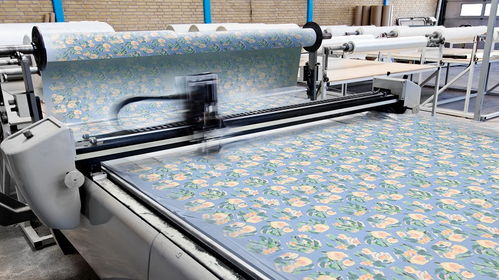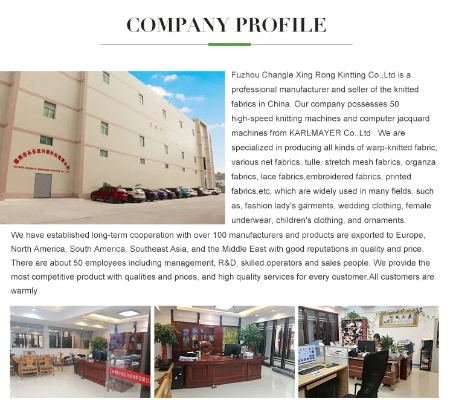Standards for Textile Inspection:A Comprehensive Guide
: A Comprehensive Guide to Textile Inspection Standards,Abstract: This comprehensive guide provides readers with a thorough understanding of the standards for textile inspection, including the principles, methods, and procedures used in assessing the quality and performance of textile products. The guide covers various aspects such as material properties, manufacturing processes, and end-use applications, providing essential knowledge for both professionals and consumers. It emphasizes the importance of adherence to these standards to ensure product safety, durability, and consumer satisfaction.,Keywords: Textile Inspection; Quality Assurance; Standards; Manufacturing Processes; End-Use Applications
Introduction: Textile products are essential components of our daily lives, ranging from clothing to household textiles. To ensure their quality and safety, it is crucial to adhere to strict standards set by relevant regulatory bodies. This guide will provide you with the necessary information on how to conduct textile inspections according to industry-standardized guidelines.
-
Understanding Inspection Objectives: The primary objective of textile inspections is to verify the conformity of products with specified quality and safety standards. The inspection process aims to identify defects, inappropriate materials, or unsafe practices that could compromise the product's performance, comfort, or health hazards.
-
Preparation Before Inspection: Before starting the inspection, ensure that all necessary tools and equipment are available and properly maintained. Prepare a checklist detailing the inspection procedures to follow and familiarize yourself with the inspection criteria.

-
Inspection Procedures:
- Sampling: Select representative samples from each batch of textiles to be inspected.
- Examination: Check for any signs of wear, tears, fraying, or damage.
- Testing: Conduct tests such as tear strength, colorfastness, shrinkage, and more to evaluate the quality and durability of the textiles.
- Quality Control: Use specialized software or manual methods to assess the results obtained during testing.
-
Record Keeping: Maintain detailed records of every inspection conducted. These records should include the date, time, location, sample number, and findings of the inspection.
-
Report Writing: After completing an inspection, prepare a comprehensive report outlining the findings, including any issues found, their potential impact on the user, and recommended corrective actions if necessary.
-
Sample Handling: Ensure proper handling of samples during the inspection process. Store them in a secure manner to prevent contamination or degradation.
-
Training and Certification: Regularly update your knowledge on new regulations and best practices through training sessions and certification programs.
-
Collaboration with Regulatory Bodies: Stay informed about the latest updates and changes in regulations governing textile products. Work closely with regulatory bodies to ensure compliance with standards.
-
Communication with Manufacturers: Engage regularly with manufacturers to understand their production processes, quality control measures, and potential risks. This can help identify areas for improvement and ensure product safety.
-
Implementation of Best Practices: Share successful inspection strategies with colleagues and industry peers to improve overall inspection efficiency and effectiveness.
Example Table: | Inspection Criteria | Description | |------------------|-------------| | Colorfastness | Assesses the resistance of textiles to fading over time due to exposure to light, heat, and chemicals. | | Tear Strength | Determines the breaking strength of textiles under specific conditions, ensuring they can withstand normal use. | | Shrinkage | Measures the change in size of textiles after washing, indicating potential issues with fabric integrity. | | Material Composition | Analyzes the composition of textiles for any harmful substances or contaminants that could pose health risks. |
Case Study: Consider a scenario where a textile manufacturer is required to comply with international standards for fire retardant properties. The manufacturer must conduct a thorough inspection of its fabrics to ensure they meet these requirements. The inspection process includes sampling, testing, and recording all findings. After the inspection, the manufacturer submits a detailed report highlighting any deficiencies identified and recommends corrective actions. This report ensures that the manufacturer complies with international standards and reduces the risk of harm to consumers.
Conclusion: By following this guide, you can effectively conduct textile inspections and maintain compliance with industry standards. Remember to stay updated on regulations, collaborate with stakeholders, and continuously improve your skills to ensure the quality and safety of textile products.
纺织品检验是确保产品质量的重要环节,本文将详细介绍纺织品检验作业的规范,包括检验流程、设备使用、样品处理等方面,旨在为纺织品检验工作提供参考。
纺织品检验作业流程
样品接收与准备
样品应按照规定的标准进行接收,包括样品外观检查、尺寸测量、重量核对等,样品应按照检验要求进行整理和分类,确保检验工作的顺利进行。
检验设备与试剂准备
根据检验项目需求,准备相应的检验设备与试剂,设备应定期进行维护和校准,确保其准确性和可靠性,试剂应按照规定进行储存和保管,避免污染和浪费。
检验操作规范
(1)外观检查:检查纺织品表面是否平整、无瑕疵、无污渍等。 (2)尺寸测量:使用测量仪器对纺织品尺寸进行精确测量。 (3)性能测试:根据检验项目要求,进行相应的性能测试,如拉力测试、耐磨性测试等。 (4)数据记录与分析:对检验数据进行记录和分析,形成检验报告。
检验报告编写与提交
根据检验结果编写检验报告,报告应包含样品信息、检验项目、测试结果、结论等信息,检验报告应清晰、准确、完整,便于查阅和参考,样品应按照规定的时间和方式提交给相关部门或客户。
案例说明
以纺织品检测为例,介绍具体的检验作业规范。
样品接收与准备
某公司收到一批纺织品样品,外观整洁,尺寸测量准确,重量核对无误,样品按照检验要求进行了整理和分类,为后续的检验工作做好了准备。
检验设备与试剂准备
该公司在检验前对相关设备进行了维护和校准,确保其准确性和可靠性,准备了相关的检测试剂,如拉力测试剂、耐磨性测试剂等。
检验操作规范
(1)外观检查:检查纺织品表面是否有瑕疵、污渍等瑕疵品。 (2)尺寸测量:使用精确的测量仪器对纺织品尺寸进行测量,确保尺寸符合标准要求。 (3)性能测试:根据纺织品的具体性能要求,进行相应的性能测试,如耐磨性测试等,在测试过程中,该公司严格按照操作规范进行,确保测试结果的准确性。
检验报告编写与提交
该公司在检验完成后,根据检验结果编写了详细的检验报告,报告中包含了样品信息、检测项目、测试结果等信息,便于查阅和参考,该公司在规定的时间内将检验报告提交给了相关部门或客户,得到了客户的认可和好评。
纺织品检验作业的规范包括样品接收与准备、检验设备与试剂准备、检验操作规范和检验报告编写与提交等方面,在实施过程中,需要严格按照规范进行操作,确保检验结果的准确性和可靠性,还需要不断总结经验教训,提高检验工作的质量和效率。
Articles related to the knowledge points of this article:
Ranking the Number of Chinese Textile Brands



